#Cyberstalker 1995
Explore tagged Tumblr posts
Text
Can we get one movie where Jeffrey's character doesn't die?!
18 notes
·
View notes
Text
one to add to the 'Jeff Combs Getting Constantly Manhandled' compilation 👊
19 notes
·
View notes
Text
Marry, Smash, Kill


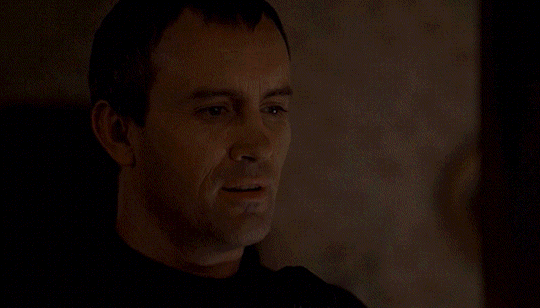
#jeffrey combs#Alan Shuba#Jake and the Fatman S1:E16#Alan Shuba is the Finance Minister for the mob#Andy Coberman#Cyberstalker 1995#Digital Prophet 1995#Andy Coberman sells stolen PCs and questionable adult material#Spoiler 1998#Captain from Spoiler#the captain is a sadist
10 notes
·
View notes
Text



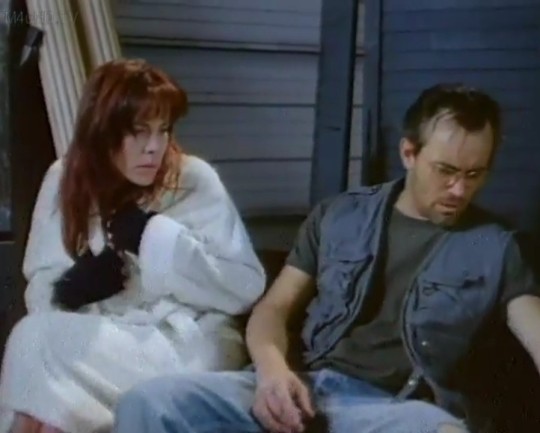
The Digital Prophet | Cyberstalker (1995) Andy Coberman
65 notes
·
View notes
Text
Conflict between Digital Citizenship and Social Media: Authority, Abuse, and Governance
The Function of Disagreement in Online Communities
Social media is frequently portrayed as a forum for candid conversation and community development. Nonetheless, power struggles among people, organisations, and platforms influence interactions that take place online. Competition for attention, identity-based discrimination, and political disagreements can all lead to conflict in digital spaces. Therefore, when claiming their presence online, marginalised communities frequently experience harassment or exclusion (Heath, 2018).
Who controls online speech is one of the main problems. Social media companies enforce content moderation policies that may disproportionately silence some voices, even as they support free expression. There are continuous discussions concerning free speech versus platform responsibility as a result of governments and regulatory agencies influencing what content is acceptable (Marwick & Caplan, 2018).

Who Establishes the Guidelines for Social Media Governance?
Government rules, community-driven guidelines, and corporate policies all influence governance in digital spaces. Commercial interests drive social media platforms' efforts to strike a balance between user engagement and financial gain while upholding safety regulations. Although legal frameworks are introduced by governments to control online content, enforcement differs from nation to nation. Furthermore, community moderators create micro-level governance structures by establishing rules within particular groups.
The platform's accountability is still lacking in spite of these governance models. Many businesses do not adequately handle online abuse, which exposes users to algorithmic bias, misinformation, and harassment. Digital citizenship will continue to revolve around debates about platform ethics, content regulation, and governance as social media develops (Marwick & Caplan, 2018).
Digital Abuse and Online Harassment
A recurring problem in digital spaces, harassment can take many different forms, such as online hate speech, doxxing, and cyberstalking. Research indicates that women, members of the LGBTQ+ community, and members of racial minorities are disproportionately affected by online abuse. According to Haslop et al. (2021), women and transgender people are frequently the targets of online abuse, and 59% of girls worldwide have experienced online harassment, according to a 2020 Plan International report.
Although online harassment is frequently written off as "just words," the consequences can be dire. Due to recurrent abuse, victims report feeling depressed, anxious, and self-conscious. The issue is made worse by the fact that offenders can evade punishment due to the anonymity of social media. According to The Guardian (2016), combating online harassment necessitates more extensive cultural and structural adjustments because it frequently reflects offline discrimination.
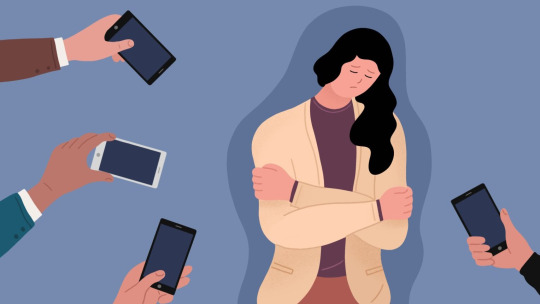
Solutions: Community-Based, Legal, and Accountability on the Platform
Legal Methods
Legal actions are being taken by governments all over the world to stop online harassment. The Online Safety Act 2021 in Australia requires platforms to take down dangerous content within 24 hours. Cyber threats and abuse are covered by other laws, such as the Criminal Code Act of 1995. Enforcement is still difficult, though, especially when it comes to transnational crimes and covert forms of harassment that defy legal definitions.
Digital Activism and Community Opposition
A key component of the fight against online abuse is activism. While artists and comedians like Hannah Gadsby use humour to critique misogyny in online spaces, movements like #MeToo have brought attention to gender-based harassment (Vitis & Gilmour, 2017). However, some contend that humour may not always be a successful tool for resistance and runs the risk of trivialising important issues (Sundén & Paasonen, 2019).
Accountability of the Platform
There is growing pressure on social media companies to improve AI-based detection systems, moderate harmful content, and improve reporting procedures. According to a Pew study from 2021, 79% of users think social media companies are not doing enough to combat online abuse. Platforms have responded by implementing community guidelines and content moderation AI, but these steps frequently fall short of stopping systemic discrimination and algorithmic biases.
References:
Haslop, C., O’Rourke, F., & Southern, R. (2021). #NoSnowflakes: The toleration of harassment and an emergent gender-related digital divide, in a UK student online culture. Convergence, 27(5), 1418–1438.
Heath, M. K. (2018). What kind of (digital) citizen? A between-studies analysis of research and teaching for democracy. International Journal of Information and Learning Technology, 35(5), 342-356.
Marwick, A. E., & Caplan, R. (2018). Drinking male tears: Language, the manosphere, and networked harassment. Feminist Media Studies, 18(4), 543-559.
Plan International. (2020). Free to be online? Plan International Report on Girls’ Experiences of Online Harassment.
Sundén, J., & Paasonen, S. (2019). Inappropriate laughter: Affective homophily and the unlikely comedy of #MeToo. Social Media + Society. https://doi.org/10.1177/2056305119883425
The Guardian. (2016). The dark side of Guardian comments. https://www.theguardian.com/technology/2016/apr/12/the-dark-side-of-guardian-comments
Vitis, L., & Gilmour, F. (2017). Dick pics on blast: A woman’s resistance to online sexual harassment using humour, art and Instagram. Crime, Media, Culture, 13(3), 335-355.
#DigitalCitizenship#OnlineHarassment#SocialMediaGovernance#Cyberbullying#digital_community#mda20009#week10
0 notes
Text
this movie????

#Cyberstalker (1995)#or 1996 idk it says different years on different websides#the digital prophet#movie night :-)#Jeffrey Combs
3 notes
·
View notes
Text
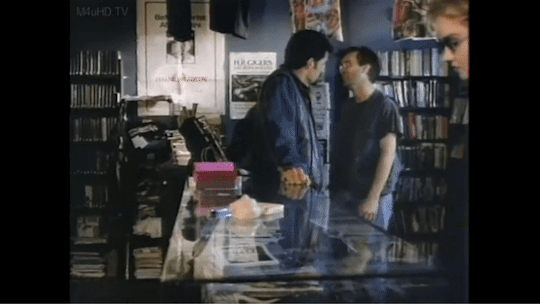


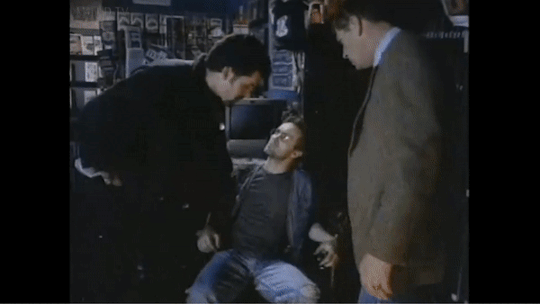
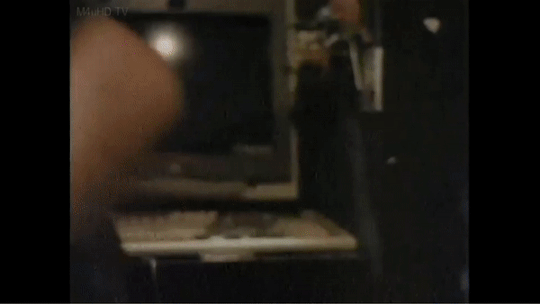

Andy gets police brutalized and then shot in Cyberstalker (1995)
#jeffrey combs#cyberstalker#i rewatched this stupid movie just to grab these clips and then i didn't even use them#so here they are#andy definitely deserves to get his ass beat but not by cops#unused clips
83 notes
·
View notes
Text
Social Media Conflict & Trolling (week 11)
Digital communities have facilitated a plethora of incredible activism and social movements and opportunities, including connecting with likeminded people, innovative forms of media entertainment and exciting career prospects as bloggers, YouTubers and influencers. However, like anything, there’s also a negative side to social media and digital communities, which will be explored in this week’s blog post. Social media conflict is a broad umbrella term covering trolling, cyber-bullying, cancel culture; hate speech and other forms of online harassment. For context, online abuse, harassment and cyber trolling costs Australia approximately $3.7 billion annually in terms of medical bills and loss of income (Burnside & Roy 2019).
Social media conflict can be directly linked to digital communities, because trolling and other forms of online harassment are typically “networked, coordinated and organised acts” (Marwick & Caplan 2018, p. 543). Similarly, media and communication experts, Alice E. Marwick and Robyn Caplan contend that finding an overarching and all-inclusive definition of harassment is “difficult, since it is a constellation of ever-evolving behaviours” (Marwick & Caplan 2018, p. 545). Continuing on, Marwick and Caplan contend that while popular discourse often frames online harassment as “an issue of individual people engaged in abhorrent behaviour”, in reality, cyber-bullying typically involves “systemic networked harassment behaviour [in groups] against their targets” (Marwick & Caplan 2018, p. 544). Therefore, because cyber-bullying efforts are often achieved through online groups, they are often referred to as ‘cyber-mobs’ who create a hostile environment for users and essentially turn the Internet into a battlefield.
Gaslighting is another form of online harassment that has received much media coverage in recent years. Although the terminology may be new, social studies researcher, Jessamy Gleeson, contends that it is used to describe a “relatively old set of behaviours” (Gleeson 2018). Gaslighting covers a range of inappropriate behaviours, however the central practice is “the psychological manipulation of a person in order to erode their sense of self and sanity”(Gleeson 2018). Some common strategies include denial of the gaslightee’s experience, escalation, trivialization and countering. Unfortunately, gaslighting has also been used to dismiss a number of #MeToo confessions of victims of abuse and domestic violence cases. However, on a more societal scale, gaslighting has been used to reframe a common (and toxic) set of female stereotypes, including the “crazy ex-girlfriend” and the “hysterical woman”, challenging the motivations of the accuser instead of fueling the idea that women are crazy (Gleeson 2018).
Anita Sarkeesian is a feminist media critic and showcases the serious implications of online harassment in her TEDxWomen talk. Sarkeesian outlines the severe online misogyny she has experienced first-hand within the video game community and the online harassment she has received due to her field of work. When Sarkeesian founded the ‘Feminist Frequency’, a video web-series exploring the representations of women in pop-culture narratives, she was immediately met with an overwhelmingly negative response from the male-dominated online gaming community. Sarkeesian was publicly humiliated and subjected to abhorrent hate speech, including rape and death threats, a bomb scare and a violent video game, which allowed players to punch an image of her face (Erica Webber 2017). Therefore, Anita Sarrkeensian’s experiences with online harassment epitomize the notion that women, in particular women of colour and queer women, “are more susceptible to online harassment, to the point where [some] young women may see it as a normal part of online experience” (Lenhart et al. 2016).
The legal implications and consequences of online harassment are murky waters, with divided opinions regarding the most appropriate and effective methods for curving online harassment (Milne 2020, lecture slide 15). At present, there is no single piece of legislation against bullying in Australia. However, the sex discrimination act 1984 and criminal code act 1995 are acts offering protection to Australians in the online sphere. Another way of attempting to reduce social media conflict is to go directly to the source – the social media platforms themselves – and urge them to enforce stricter moderating protocols and algorithms to eradicate inappropriate behaviour online. The urge for tighter regulation of the digital sphere is further emphasised by assistant professor of communication and journalism, Glen Fuller. Fuller contends that the reason for insisting on distinctions between individual online social situations is because “each technology and technological change requires due consideration and a measured policy response” (Fuller 2014). Anita Sarkeesian argues that social media platforms need to be the agents of change in order to eliminate online harassment. Sarkeesian believes that their current attempts to regulate cyber-hate are “like Band-Aids on a fundamentally flawed structure” (Erica Webber 2017). Continuing on, advocacy and advice are alternative options to legal remedies, which the eSafety Commissioner is responsible for in Australia. Lastly, on a lighter note, some people have turned to humour to raise awareness about online harassment, including the well-known comedians Hannah Gadsby and Amy Schumer.
Therefore, it is evident that there is an urgent need for well-researched and effective new media legislation regarding online harassment, trolling and cyber-bullying, not simply in Australia, but on a global scale. Furthermore, associate professor of media and communication, Dr Anthony McCosker, contends that the central question for ensuring cyber safety through digital citizenship is “how to account for and promote critical and creative literacies while accounting for conflict, harassment and the wellbeing interests of young people.” Therefore, this week’s topic has highlighted that whilst there are many positive and empowering aspects of digital citizenship and digital communities, there is also a darker side to the Internet and social media, which should not be dismissed, and can unfortunately have a serious, harmful and sometimes irreversible impact on members of society.
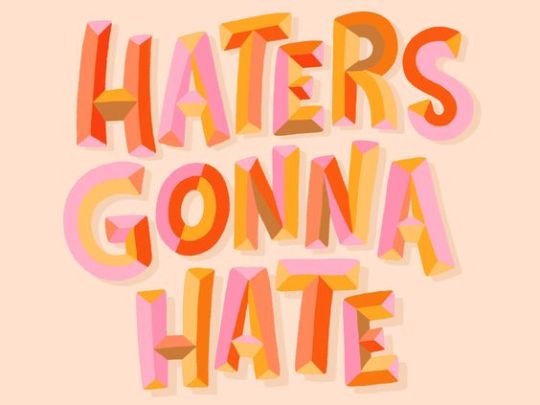
Image Source: ‘unknown’ via Pinterest
References
Burnside, N & Roy, T 2019, ‘Online abuse, harassment, cyber trolling costing Australians $3.7 billion’, ABC News, 28 January, viewed 28 May 2020, <https:// www.abc.net.au/news/2019-01-28/online-abuse-harassment-costing-australians-3.7-billion/10754196>.
Erica Webber, J 2017, ‘Anita Sarkeesian: ‘It’s frustrating to be known as the woman who survived #Gamergate’’, The Guardian, 17 October, viewed 28 May 2020, <https://www.theguardian.com/lifeandstyle/2017/oct/16/anita-sarkeesian-its-frustrating-to-be-known-as-the-woman-who-survived-gamergate>.
Fuller, G 2014, ‘Cyber-safety’: what are we actually talking about?’, The Conversation, 27 February, viewed 29 May 2020, <https://theconversation.com/cyber-safety-what-are-we-actually-talking-about-23505>.
Gleeson, J 2018, ‘Explainer: what does ‘gaslighting’ mean?’, The Conversation, 6 December, viewed 28 May 2020, <https://theconversation.com/explainer-what-does-gaslighting-mean-107888>.
Hopkins, S & Ostini, J 2015, ‘Online harassment is a form of violence’, The Conversation, 8 April, viewed 29 May 2020, <https://theconversation.com/online-harassment-is-a-form-of-violence-38846>.
Lenhart, A, Ybarra, M, Zickuhr, K & Price-Feeney, M 2016, ‘Online Harassment, Digital Abuse, and Cyberstalking in America’, Data & Society Research Institute, 21 November, viewed 30 May 2020, <https://www.datasociety.net/pubs/oh/Online_Harassment_ 2016.pdf>.
Marwick, A E. & Caplan, R 2018, 'Drinking male tears: language, the manosphere, and networked harassment', Feminist Media Studies, vol. 18, no. 4, pp. 543-559.
McCosker, A 2016, ‘Managing digital citizenship: cyber safety as three layers of control’, in McCosker, A, Vivienne, S & Johns, A (eds), Negotiating Digital Citizenship, Rowman & Littlefield International, Maryland, pp. 1-15.
Milne, E 2020, ‘Lecture 11. Digital communities and trolls – understanding social media conflict’, MDA20009 Digital communities, Learning materials via Canvas, Swinburne University of Technology, 27 May, viewed 27 May 2020.
TEDx Talks 2012, Anita Sarkeesian at TEDxWomen 2012, 5 December, viewed 28 May 2020, <https://www.youtube.com/watch?v=GZAxwsg9J9Q>.
#mda20009#digitalcommunities#digitalcitizenship#onlineharassment#onlinetrolling#online femininism#social media conflict
8 notes
·
View notes
Text
WEEK 7: DIGITAL CITIZENSHIP AND CONFLICT: SOCIAL MEDIA GOVERNANCE
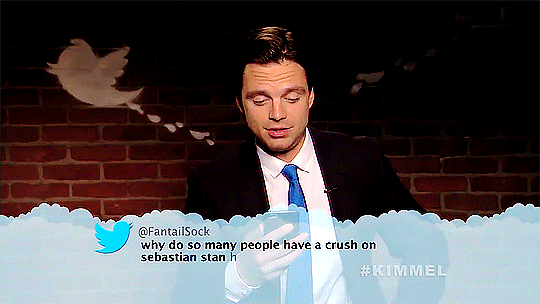
While social media enables individuals with a digital presence to voice their own opinions with a sense of agency, it also allows negative dialogue to form, usually in the form of online harassment and bullying. This umbrella term, refers to behaviours such as offensive name calling, intent to purposely embarrass someone, physical threats, sexual harassment, rumours, as well as impersonation or harm online (Lenhart et al. 2016). In extreme cases, these behaviours can extend beyond the online sphere, and take forms in behaviours such was doxing and attempts to hurt the victim in person, after extended online harassment (Lenhart et al. 2016).
When discussing online harassment and bullying, it is important to note that it is largely a gendered issue, with women (typically young, women of colour), being at the forefront of the abuse (Marwick and Caplan 2018). Typically, online abuse that targets women who are openly feminists or progressive is perpetrated by individuals from an echo chamber. As coined by Marwick and Caplan, this “manosphere”, encapsulates ‘blogs, podcasts, and forums’ (2018). Many members of this subsection are anti feminists, pickup artists, and mens rights activists, who’s discourse largely includes a common dialogue, even if their views and values slightly differ (Marwick & Caplan 2018). Members of these groups who partake in cyberbullying also use what Is called ‘gaslighting’, which refers to ‘the psychological manipulation of a person in order to erode their sense of self and sanity’ (Gleeson 2018). Online harassment is usually related to a sense of power. These groups aim to seek power and control over others, through behaviours of bullying and intimidating, which gaslighting can be effective at achieving (Gleeson 2018, Marwick & Caplan 2018).

Because of this, social media governance has never been so important. There are numerous ways that this sort of sanctions can be implemented. Firstly, governance at a micro level ( such as social media moderation and group governance by an outsourced, impartial group), and a macro level (such as government laws and considerations on a state/ nation level) (Marwick & Caplan 2018). By definition, social media governance refers to a a set of rules, regulations, and an ongoing commitment which focuses on evaluating and Identifying behaviours that are harmful to others in the social public sphere. In Australian, there are numerous legal remedies to fulfil the role of social governance, such as The Criminal Code Act 1995, as well as The Online Safety Act 2021. Both legislations protect victims from online abuse, specifically in relation to minors and unsafe image sharing.
With the rise of social media stars, social media bullying has never been so rampant. It is important to have multiple forms of governance in place, both from legislative sources and from members of the community in order to mitigate this.

Resources:
Gleeson, J 2018, Explainer: what does ‘gaslighting’ mean?, The Conversation.
Lenhart, A, Ybarra, M, Zickuhr, K & Price-Feeney, M 2016, ONLINE HARASSMENT, DIGITAL ABUSE, AND CYBERSTALKING IN AMERICA, 21 November.
Marwick, AE & Caplan, R 2018, ‘Drinking male tears: language, the manosphere, and networked harassment’, Feminist Media Studies, vol. 18, no. 4, pp. 543–559.
0 notes
Text
An incomplete list (but already way too long) of stalker/obsession films for... no reason at all. Keep in mind I got all these from online lists, so if some of them aren’t actually stalker films, I cannot be held accountable for it.
The Roommate (2011) - “When college freshman Sara arrives on campus for the first time, she befriends her roommate, Rebecca, unaware that the girl is becoming dangerously obsessed with her.”
One Hour Photo (2002) - “An employee of a one-hour photo lab becomes obsessed with a young suburban family.”
Play Misty For Me (1971) - “A brief fling between a male disc jockey and an obsessed female fan takes a frightening, and perhaps even deadly turn when another woman enters the picture.”
The Fan (1996) - “Three-times MVP baseball player Bobby Rayburn joins San Fransisco Giants, and obsessive fan, whose profession is selling hunting knives, Gil Renard is excited over that. But Rayburn plays the worst season of his career and Renard tries to do everything to help him, but goes too far.”
Dear Zachary (2008) - “On November 5, 2001, Dr. Andrew Bagby was murdered in a parking lot in western Pennsylvania. The prime suspect: his girlfriend. As the saga unfolded, Andrew’s oldest friend began making a film…”
Hidden (2005) (might be in French?) - “An upper-middle class Parisian family starts receiving anonymous video tapes of their house. There’s no commentary, no threats, but the message is clear: You’re being watched. Slowly, dark revelations come to light…”
Enduring Love (2004) - “On a beautiful cloudless day a young couple celebrate their reunion with a picnic. Joe has planned a postcard-perfect afternoon in the English countryside with his partner, Claire. But their idyll comes suddenly to an abrupt end.”
The Loved Ones (2009) - “When Brent turns down his classmate Lola’s invitation to the prom, she concocts a wildly violent plan for revenge.”
Body Double (1984) - “A young B movie actor’s obsession with spying on a beautiful woman who lives nearby leads to a baffling series of events with drastic consequences.”
The Gift (2015) - “When married couple Simon and Robyn unexpectedly encounter Gordo, an acquaintance from Simon's past, little do they know that their perfect lives will be thrown into a terrifying tailspin.”
The Good Son (1993) - “Mark, a young boy who loses his mother, must stay with his extended family while his father is away on business. Mark becomes acquainted with his cousin Henry. However, the extent of Henry's depravity soon becomes clear.”
Remember My Name (1978) - “Neil Curry is living a happy life with his second wife Barbara in California after abandoning his first wife, Emily, in New York. Their life of domestic bliss is interrupted when Emily comes back from prison, where she served a 12-year sentence for murdering Neil's former lover.”
The Resident (2011) - “A landlord becomes obsessed with a doctor who moves into his building.”
Reviving Ophelia (2010) - “No one listens when a teenager suspects that her cousin is in an abusive relationship.”
Hear No Evil (1993) - “An Oregon woman's new friend helps her elude a corrupt policeman who wants an item she unknowingly holds.”
Hell Hath No Fury (1991) - “The wife of a slain man is framed by the killer, a warped woman whose identity she knows.”
Creep (2014) - “Aaron answers an online ad and drives to a stranger's house to film him for the day. The man wants to make a movie for his unborn child, but his requests become more bizarre as the day goes along.”
Sleeping With The Enemy (1991) - “After faking her death in order to flee from her violent husband, Martin, Laura Burney leaves Cape Cod and moves to Iowa, where she adopts a new identity and starts dating a local teacher, Ben Woodward. Martin, meanwhile, unearths evidence suggesting that she isn't dead, and when her mother confirms this, he tracks her to Iowa.”
Stalked at 17 (2012) - “An abusive man promises to kill his girlfriend when she threatens to end the relationship and take their baby.”
Stalker (2010) - “A troubled writer retreats to a country house to work on a new project, but her new assistant may be hiding a sinister agenda.”
The Strangers (2008) - “Kristen and James are expecting a relaxing weekend at a family vacation home, but their stay turns out to be anything but peaceful. First, a mysterious and dangerous woman arrives at the door while James is out on an errand. After a time, the real danger does show up - in the form of three masked torturers, leaving Kristen and James struggling for survival.”
Lady Beware (1987) - “A Pittsburgh window dresser gets tough with a deranged lab technician who stalks her.”
Dark Summer (2015) - “Alone under house arrest for stalking, a teenager experiences a terrifying brush with the supernatural.”
Eye Of The Stalker (1995) - “A wily legal consultant maneuvers within the letter of the law to be near the object of his obsession, a judge's daughter.”
Fear (1996) - “When 16-year-old Nicole Walker meets 23-year-old David McCall at a Seattle nightclub, she falls in love. David is exciting and charming, and despite the wide age gap, he wins over Nicole's family -- except for her workaholic father, Steven, who's suspicious of David from the start. His concerns are realized when David turns out to be a violent sociopath who sees Nicole as his possession.”
Fear Stalk (1989) - “A producer from Beverly Hills is shocked when someone steals all of her belongings out of her purse. The thief begins to make threatening phone calls and withdraws money from her accounts. The stalker becomes more and more dangerous until he finally tries to kill the producer.”
The Paperboy (1994) - “Small-town deaths are the result of a 12-year-old boy's obsession with a divorced mother.”
The Perfect Guy (2015) - “With a fulfilling career and a loving relationship, lobbyist Leah Vaughn seems to have it all. Then Dave, her long-term boyfriend, questions her future plans for marriage and a family. The resulting breakup leaves Leah heartbroken, until she meets Carter Duncan. Soon, the budding romance turns dangerous as Carter reveals his volatile nature, forcing Leah to turn the tables on the man she thought was Mr. Right.”
P2 (2007) - “Angela is working late on Christmas Eve. When she finally decides to leave, she goes down to the parking garage to get her car, but it won't start. Thomas, the garage's security guard, offers to help. He also invites Angela to dinner, but she refuses. Thomas, crazed, knocks her out. She wakes up in Thomas' office, chained to a chair and in different clothes. Now Angela must fight for her life in order the escape from the garage.”
Obsessed (2009) - “Things couldn't be better for Derek Charles. He's just received a big promotion at work, and has a wonderful marriage. However, into this idyllic world steps Lisa, a temporary worker at Derek's office. Lisa begins to stalk Derek, jeopardizing all he holds dear.”
Unforgettable (2017) - “Barely coping with the end of her marriage, Tessa Connover learns that her ex-husband, David, is now happily engaged to Julia. Soon, Tessa's jealousy starts to consume her, and she will stop at nothing to turn Julia's paradise into the ultimate nightmare.”
Unlawful Entry (1992) - “Michael and Karen Carr call the police after a failed robbery. Officer Pete Davis arrives and helps arrange the installation of a new security system. The grateful Carrs have Pete to dinner and strike up a friendship. Pete invites Michael to ride with him during a night's patrol and gives him the chance to beat up the burglar. Michael refuses and tells the disturbed cop to stay away, but Pete begins stalking the terrified couple.”
Alone With Her (2006) - “A stalker named Doug uses hidden cameras to spy on Amy, the beautiful object of his obsession. With knowledge gleaned from his secret surveillance, the young man manipulates her, first into friendship, then pushes for a romantic relationship.”
The Crush (1993) - “Writer Nick Eliot moves to a new city for a magazine job and rents a room in the house of Cliff and Liv Forrester, whose 14-year-old daughter, Adrian, instantly makes her attraction to Nick clear. Nick has trouble fending off Adrian's advances and as her obsession with Nick grows, Adrian becomes angry at being rejected and starts attacking his property and friends.”
Split (2016) - “Three girls are kidnapped by a man with a diagnosed 23 distinct personalities. They must try to escape before the apparent emergence of a frightful new 24th.”
Gone (2012) - “A woman is convinced her kidnapper has returned when her sister goes missing.”
My Soul To Take (2010) - “A serial killer returns to his hometown to stalk seven children who share the same birthday as the date he was allegedly put to rest.”
Cyberbully (2015) - “A British teenager is forced by a computer hacker to do his bidding. If she refuses, the hacker will leak compromising photos of her to the public.”
Stalked By My Neighbour (2015) - “A mother and her 18-year-old daughter move to suburbia to help recover from a traumatic home invasion, but a sinister shadow seems to be stalking them.”
Ratter (2015) - “A young graduate student is tormented by a stalker who hacks into her electronic devices and monitors her every move.”
The Perfect Teacher (2010) - “A spoiled, selfish teenager becomes infatuated with her teacher. She befriends his daughter as a way of worming her way into the family, and sets about manipulating every aspect of his life.”
Cyberstalker (2012) - “Thirteen years ago, Aiden Ashley's world was torn apart after an online stalker followed her into the real world and broke into the Ashley family home to claim the object of his desire.”
Valentine (2001) - “Five women are stalked by an unknown assailant while preparing for Valentine's Day.”
The Wrong Girl (2015) - “A budding friendship with a new student takes a sinister turn when the girl starts to disrupt the lives of her family.”
Disturbia (2007) - “A teen living under house arrest becomes convinced his neighbor is a serial killer.”
Kristy (2014) - “When a college girl who is alone on campus over the Thanksgiving break is targeted by a group of outcasts, she must conquer her deepest fears to outwit them and fight back.”
Open Windows (2014) - “A jilted fan soon finds himself pulled into a deadly game of cat-and-mouse after he accepts the opportunity to spy on his favorite actress via his laptop.”
Cry_Wolf (2005) - “Eight unsuspecting high school seniors at a posh boarding school, who delight themselves on playing games of lies, come face-to-face with terror and learn that nobody believes a liar - even when they're telling the truth.”
Blackway (2015) - “An ex-logger comes to the aid of a woman who returns to her hometown in the Pacific Northwest and finds herself harassed and stalked by a former cop turned crime lord.”
Choose (2011) - “A journalism student tracks a killer with the help of her detective father and a therapist.”
Amusement (2008) - “Three women are stalked by a killer with a grudge that extends back to the girls' childhoods.”
Truth & Lies (2015) - “Teens band together to investigate the source of anonymous messages that threaten to expose their secrets.”
Night Rain (2017) - “An actress is unwittingly hired by her stalker to make an independent movie about a famous unsolved Hollywood murder, but she and her group of young indie filmmakers soon find themselves the subject of their own terror.”
Voidfinder (2017) - “A supernatural stalker pursues a super model to steal her soul with his demonic camera.”
#FollowFriday (2016) - “Students and Faculty on a college campus are targeted by a killer using social media.”
Urban Legend (1998) - “A college student suspects a series of bizarre deaths are connected to certain urban legends.”
The Good Neighbour (2016) - “A pair of mischievous high school kids create the illusion of a haunting on an unsuspecting neighbor. While keeping his every reaction under surveillance, they see much more than they bargained for.”
When The Bough Breaks (2016) - John and Laura Taylor are a young, professional couple who desperately want a baby. After exhausting all other options, they finally hire Anna, the perfect woman to be their surrogate - but as she gets further along in her pregnancy, so too does her psychotic and dangerous fixation on the husband.
14 notes
·
View notes
Text
Here's the weird montage from Digital Prophet. I guess this was the character's...inner thoughts? Maybe this is what the internet looks like on the inside? Encarta ass lookin montage
#jeffrey combs#digital prophet#cyberstalker 1995#90s jeff#90s movies#old web#old internet#90s internet#encarta
9 notes
·
View notes
Text
For @starlight199947, who asked for a few more.

Read all about them after the jump!
Doc Haggis (Lurking Fear)
Pros: He’s loyal, dedicates his life to helping people in distress, and despite the first impression he may give, he is smart. Dummies don’t often graduate with an MD. He’s a hopeless romantic, and envisions a future for himself that’s free from trauma and pain. There’s an optimism in him that’s subtle, but he’s just waiting for someone to spark it like the steadfast little ember it is, then it’d flare to life with passionate intensity.
Cons: His trauma has devastated his self esteem. He hopes he’s worthy of love but he struggles to believe it. It’s been so long since anything good has happened in his life that he may not recognize it when it happens, and he’ll always be bracing for the proverbial shoe to drop. He copes with alcohol and nicotine, leaving himself in a perpetual state of buzzed half stupor, which will eventually kill him if the horrors don’t first.
A relationship with him would be an emotional rollercoaster. He’d have good days, when the future looks bright, and he’d have dark days. You’d have to tread carefully to avoid triggering a trauma response, which could send him into an alcoholic and chain smoking spiral. He wouldn’t blame you if you did, he’s pragmatic enough to recognize that his issues are his own, but it would be a difficult strain on the relationship nonetheless.
His idea of a good date is definitely going to draw from his wistful romanticism. He’s picturing the two of you somewhere else. Somewhere away from the village. Maybe it’s a sandy shore bathed in moonlight, and you’re eating fresh baked clams on a checkered blanket by candlelight, talking and listening to the waves roll in. He’d be looking at your lips every time you smiled, longing for you to lean forward and capture his in a kiss.
Lonnie Hawks (Death Falls)
Pros: He’s a bundle of energy. Life with Lonnie would rarely be boring. He’s also remarkably focused. You’d think maybe ADHD was the culprit behind the hyperactivity but you’d soon discover that’s not it at all, not with how he can single-mindedly laser focus on a goal until he sees it through to completion. Sometimes this bullheaded drive is a major bonus. If he wants that job at the rendering plant by golly he’s going to get it. His relationship with his brother is remarkably strong, and they’re a package deal. If you want to be with Lonnie, he wants you to be best friends with Roger too.
Cons: the same things that can work in Lonnie’s favor can also be his pitfalls. His restlessness is why he ultimately couldn’t stay put at his job at the rendering plant for long. His hyperactivity can be exhausting. And his hyperfixations can come at the expense of the people around him. He takes advantage of his brother’s indulgence of his behavior, has for his entire life, and as a result he would expect any other important person in his life to bend to his whims as well. Don’t get him drunk. He’s either reckless or violent… or both, when he imbibes too much.
A relationship with him would be exciting for a while, but would eventually burn you out. He’s aggressive, adversarial, and selfish. You’d realize a month or two in that he was far more emotionally immature than you realized, and that unless he chose to hyper-fixate on you, you’re just a character in his story. On the flip side, the sex would be incredible. He manages to pour all of his pent up aggression, frustration, anger, and sensuality right into bed, and his stamina is unparalleled. If a tumultuous relationship based on sexual attraction is what you’re looking for, then Lonnie’s the man for you.
His idea of a good date might surprise you. You’d likely meet him for the first time at Mae’s Bar so you’d figure he’d want to bring you back there, but he chooses Luigi’s instead. You share a hand tossed pizza before walking down Main Street to get an ice cream cone, then you climb up to the top of the town water tower and talk all night. He jokes a lot about wanting to get you naked, and he really does want the night to end that way. If it doesn’t, he’ll be disappointed, but he won’t be mad about it. Expect him to hint more aggressively on your second date though.
Andy Coberman (Cyber Stalker/Digital Prophet)
Pros: He’s kind of cute, albeit scruffy. If you’re not all that scrupulous, you might enjoy his ability to source you computer equipment, illicit drugs, and dubious porn.
Cons: His habits would make him dangerous. HIV isn’t out of the question since he shoots up, his side hustle with stolen computers has him on the wrong side of the law, and his porn shop might not be a place you’d want to take your mom. He isn’t above hitting women on a dime if they displease him, and even if you like that sort of thing, he’s not doing it for your pleasure. He’s a bad boy through and through, and not in a good way.
A relationship with him would be pointless. He uses people for his own selfish pleasure, and wouldn’t consider you his partner even if you shacked up with him. If you tried, you’d have all the sexual benefits of a partnership with none of the security or emotional investment.
His idea of a good date is shooting up on his ratty old sofa and staring at the ceiling. Maybe you two would have brief, unfulfilling sex. Stay away from this piece of shit.
Father Jonathan (Evil Clergyman)
Pros: He’s hot, and you bet your boots this boy is adventuresome in bed. He also has a peculiar knack for making you absolutely obsessed with him. He’s all you can think about. Maybe it’s his warm, masculine scent. Maybe it’s the way he looks at you, his luminous eyes so mysterious and enigmatic, almost as if he were hiding ancient knowledge in their hazel depths. Maybe it’s the way he can play your every sensitive nerve ending like a fiddle as he brings you to the heights of pleasure…
Cons: Oh god. All those pros were a trap. Now you’re alone with him in his rooms… or are you alone with your own spiraling madness? The doors won’t open, the only window is welded shut, and the only way out is more horrible than you can fathom. Was any of it real? As your mind unravels, you start to doubt everything… even Jonathan’s existence.
A relationship with him would be a secret. He’d convince you to keep it hush hush since it’s technically taboo. He’s supposed to be celibate after all, so there’d be no dates in public places, no hand holding in church, just stolen furtive glances and clandestine meet ups. Somehow though, you’d be completely convinced that being with him was everything your wildest dreams could conjure up, that is… until it wasn’t.
His idea of a good date is smuggling some sacramental wine from the church pantry and sneaking up to his rooms to spend all night talking and exploring each other’s bodies. At least, that’s what you think was his idea of a good date, but really, that was your idea of a good date. His perfect date comes months later, after you’ve shuffled off this mortal coil. He’s wearing you like a skin suit as he heads out on the town for his perfect date: The hunt begins anew.
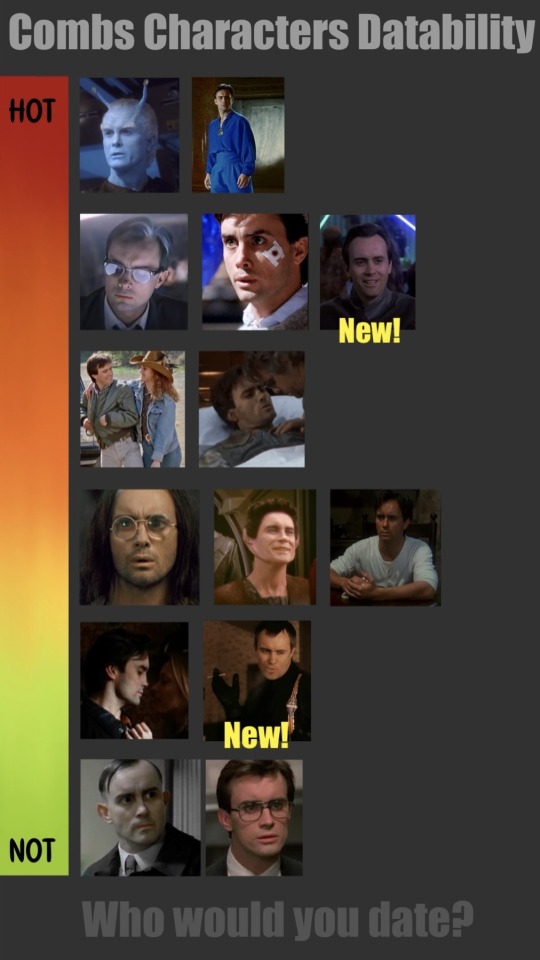
For @femalehumanoid, who hoped I would write dating profiles for Harriman Gray and the Captain. Here you are my dear. Your wish is my command.
The rest of the Combs characters have had their profiles beefed up a bit as well, with my own spicy take on what it’d be like to be in a relationship with them, and what their ideal date looks like.
Fair warning, some of the descriptions below may be a bit nsfw!
Thy’lek Shran (Star Trek Enterprise)
Pros: Strong sense of justice, good at what he does, sexy, energetic. He’ll fight for what’s right and he’ll protect you with his life. He has a soft side and he’s not afraid to show it.
Cons: Hotheaded, a bit rash.
A relationship with him means you’re in it for the long haul. If Shran gets emotionally invested in you, he’s thinking of you as a potential long term mate and possibly as marriage material. He’s a physical being, so he’d be disappointed if there wasn’t a very strong sexual attraction between the two of you.
His idea of a good date involves a good workout. He’s taking you rock climbing, to the gym to be his sparring partner, or to a firing range. You’ll get a good deal of aggression out during the first round of physical activity, and an even greater amount of passion out during the next round. If the date doesn’t end with the two of you naked, drenched in sweat, and fighting to catch your breath on the floor of his quarters, he considers there to be room for improvement.
Anton Mordrid (Doctor Mordrid)
Pros: Fights evil, lives a quiet life. Financially stable. Has a romantic streak. Is an all around sweet guy who will bring you breakfast in bed and read to you. He teaches you wizardry.
Cons: Absolutely tragic sense of style. He may need to leave on interdimentional missions on short notice.
A relationship with him would provide stability and a quiet comfort that few can boast. He’s got boundless knowledge to share with you on countless subjects, and if you love to learn, you’ll love having such a patient, enthusiastic teacher. His favorite part of the day is slipping from his street clothes into his comfies, settling in with hot coffee and a book, and reading to you in his deliciously soft voice. Every time you two retire to the bedroom, you rediscover another subject he has seemingly unlimited knowledge in. He never fails to bring you to completion, stroking your back and murmuring praise as you come down from your peak.
His idea of a good date is a night in with a warm beverage and stimulating conversation. He’s a bit old fashioned, so he doesn’t get intimate until the two of you commit to being exclusive. In the mean time, he’s happy to conclude a date with a sensual over the clothes massage and a steamy makeout session.
Chaz (Dead Man Walking)
Pros: Is objectively very cute. He’d risk his life for yours without question. He works past his fear to achieve his goals. No doubt a snuggler big on showing affection.
Cons: Is a bit whiney, possibly has the plague. Tragic taste in nicknames.
A relationship with him means he has your back, no matter what. He’s the first to come to your defense, the first to jump in when you need help, and he’ll walk through fire to make sure you’re alright. He may complain on the surface, but deep down he’s proud to be needed. He’s small and fragile, so he’d be happiest if you reciprocated, coming to his defense when he needs it, and offering protection when he’s scared or feeling vulnerable.
His idea of a good date is hanging out somewhere clean and safe. He prefers it if you’d come over to his humble lodging and play a board game, play cards, or listen to music together with a glass of wine. He’ll happily have sex with you if you’re the one to initiate it. He thoroughly enjoys it when his partner tops, preferring to be entirely submissive in bed.
Crawford Tillinghast (From Beyond)
Pros: Brilliant scientist and inventor. Submissive and sweet. Romance with him would be chaste and old fashioned. He’d do his best to keep you safe. Cute little guy in a big sweater.
Cons: Sexually repressed. A bad luck magnet. Despite his best efforts, trouble finds him.
A relationship with him would be sweet and oh so charming. He’d show up on your doorstep, holding a bouquet of flowers and a bottle of wine, and would be content to snuggle on the sofa under a cozy blanket, watching a movie. He’d look at you with his big green eyes, delighted to hear stories about your day, thrilled to tell you all about what he’s working on. Every time the two of you make love, it’s slow and sensual, him looking at you in awe, enraptured and in love. He’s a sexual novice, but his sweet naïveté has an allure you can’t deny.
His idea of a good date is the kind of corny romance you typically see in movies. Carriage rides through the park. Moonlit walks on the beach. Getting serenaded by the violinist at an Italian restaurant. But the way his face softens when you’re happy, the way he lights up when you’re excited, the way he looks at you like you’re the most beautiful thing he’s ever seen, make these dates magical. More than the activities do.
Harriman Gray (Babylon 5, S01E17)
Pros: He’s honorable, ambitious, and gorgeous. He has a wholesome sense of humor. He can use his telepathic abilities to his advantage in bed. He’ll hear your mind when you enjoy something he does, making him the best lover you could imagine.
Cons: He’s on the timid side, which allows stronger personalities to railroad his. He’s not always the most tactful. He tries his best not to invade your privacy with his telepathy but he slips sometimes, opening the door for awkward discoveries.
A relationship with him would require patience, but would be well worth it. He travels a lot for work. When you do see him, he’s very affectionate. He wants to spend all day with you under the warm bedcovers stroking your hair, tangling your limbs together, and sharing stories about your respective days.
His idea of a good date is a romantic candlelight dinner followed up with hours of mind blowing sex, after which you both collapse bonelessly into sleep. The date concludes with him waking you up with breakfast in bed, his hair combed back, in full uniform, carrying your tray, which he’s decorated with a single rose. He leaves you for work with a kiss and a promise to see you again soon.
Andrew Paris (Phantom Empire)
Pros: Strong sex appeal. Wears the tightest pants in existence. He wouldn’t object to spontaneous adventures. He’s impulsive and quirky.
Cons: Anyone who flirts with him is a legit threat. He’s a slutty little strumpet. He’s not secure enough to think anyone would like him for his mind.
A relationship with him would be focused heavily on physical exploration. He’s aware that he’s charismatic and magnetic, and he’s aware that he’s attractive. Part of him wonders if you just want a pretty boy toy, and he’s equal parts happy to fulfill that role and disappointed that people don’t often see the potential for more in him, given he’s an egg head, studying archeology at Miskatonic University.
His idea of a good date is finding a fun bar to check out. Dive bars, sports bars, tiki bars, and local watering holes wherever he travels all amuse him, and he wants to explore them with you. He’d love to end the date with playful, enthusiastic, energetic sex. He has boundless stamina, and wants you desperate for more of what he has to offer in that department.
Bill Knight (Felony)
Pros: Handsome, charismatic crime fighter. Eager to hop in bed with you if you show a smidgeon of kindness toward him. He whimpers very prettily. He’s quick and agile.
Cons: He is a total hazard. You’re in the line of fire if you hang with him. He may break into your house. He’s flown through an absurd number of windows.
A relationship with him would be interesting. He’s persistent. He gets a trifle obsessive about getting what he wants, and what he wants from you is entirely unclear. He may push you outside your comfort zone frequently. Whether that be recruiting you to help him with an FBI case or the fact that you’re only dating because he broke into your house looking for a place to hide and you didn’t have the heart to kick him out.
His idea of a good date may be unconventional or unexpected. He may want to stay in and make love in front of a roaring fire, or he may be in the mood to get beers and chicken wings at the local strip club. The more adventure you’re down with, the more he’ll indulge in with you.
D-Day (Fortress)
Pros: Adorable, good with machines. There’s kindness in him. He will risk his life for his friends. He’s a little guy with a big heart.
Cons: He is easily led into dangerous situations. He needs a dentist. Hes in jail.
A relationship with him, while he’s in prison, would consist of letter writing and conjugal visits. He’d write to you like he’s writing diary entries. He’d tell you about his plans, his dreams, his fears, and his fantasies. He’d look for the mail cart every day, wide eyed and hopeful, and his heart would swell when he finally receives one in return from you. He’d read your letters over and over, imagining he could smell you on the paper. When you came for your bi-annual visits, he’d be so excited he’d be shaking like a leaf, stealing glances up at you shyly. When you were intimate, you’d always marvel afresh at how beautiful his eyes are when you gently remove his glasses from his face. He’d take his time gently and tentatively worshiping every inch of you as you made love. Big, wet tears would stream down his face and heart-rending, whimpering sobs would make his small chest heave as you left him behind again in Fortress prison.
His idea of a good date is heartbreaking in its simplicity. When he gets out of prison, he wants to take you on a real date. Dinner and a movie. He wants to walk you to your door at the end of the evening and, if you want to, kiss each other goodbye.
Weyoun (Star Trek Deep Space 9)
Pros: Ethereal. Obscenely sexy. Knows what he wants and how to get it. If he chooses to be devoted to you, he’ll be loyal unto death. Loves to have fun, loves to explore new things, and loves to tease. Kinky.
Cons: Religious nut. Can’t appreciate art, food, and many simple pleasures. Manipulative.
A relationship with him would likely be largely secret. He wouldn’t want you seen as a vulnerability or weakness. He also wouldn’t want to give the Founders the impression that he wasn’t focused enough on his work. You’d have clandestine meetings. Hurried make out sessions in dark, quiet places. Impromptu, fully clothed, frantic sex against a wall in a quiet corridor. Fingers meeting and intertwining under a conference table. If you’re not careful, you can become his obsession, and he may have a crisis of conscience if he believes he’s worshiping you more than he worships the Founders.
His idea of a good date is sharing a love of play. He adores games, and loves making jokes at people’s expense. He may take you to try a food you’ve both never sampled before, so you can enjoy discovering the new textures and new tastes respectively, followed by gaming tables and some good people watching.
John Reilly (Castle Freak)
Pros: Handsome DILF. He wants to improve his life. Repentant of his sins, affectionate.
Cons: Touch starved, desperate, directionless, alcoholic, and when he falls off the wagon he falls all the way off. He also comes from a family of lunatics so there’s that.
A relationship with him, if you’re lucky, is during a sober period. If it is, you can expect plenty of quiet evenings at home. Him reading a book or grading term papers while you busy yourself with your own tasks or hobbies. You may go to a play on a Friday night that the drama department is showing. You’d go to bed together, have enthusiastic but unimaginative sex, and spoon each other to sleep.
His idea of a good date would be dinner at a favorite restaurant. He needs your support staying away from the drink menu. It’s a great date if it ends in a makeout session during your after dinner walk, you wearing his tweed jacket over your shoulders, and him holding your hand.
James Wilkins (Hunter S07E13)
Pros: Sensual as fuck. He can’t keep his hands off you. Life with him would be a roller coaster ride of sex and danger. He’s the sexiest kind of bad boy. Think tattoos, leather, fast cars, and adrenaline.
Cons: He’s a thief and a murderer. He’s not interested in redemption or in getting his act together. He’s attracted to women more dangerous than he is.
A relationship with him would be mercurial. He’d darken your door and you’d be swept off your feet by his charms, swept up into his latest scheme, and swept into bed. Then when he leaves you can go long stretches without hearing from him. Left to your own devices indefinitely, waiting for him to roar back up your driveway in his black convertible like a summer cyclone.
His idea of a good date would be a trip to a race track or casino. He’d want you both to dress in your finest and act like high rollers for an evening. Gambling, drinking, winning, losing, and topping off the evening with plenty of energetic and inventive sex.
Captain (Spoiler)
Pros: If you’re a masochist, the Captain is the man for you. Sexy and dominant, the Captain will happily tie you down and mercilessly overstimulate you until you’re a mewling puddle.
Cons: Sadistic, obsessive, controlling, and aggressive. He enjoys intimidating his object of focus, and wouldn’t be above getting off on keeping you constantly on your toes.
A relationship with him would be like navigating very treacherous waters. One minute he’s running a gloved hand down your face and calling you his good little pet, the next he’s viciously backhanding you for any number of perceived grievances. You wouldn’t know whether he loved you or merely tolerated you.
His idea of a good date would be to take you to a dark, smoky jazz club. He’d sip a whisky neat, smoke a cigarette, and give you a smoldering gaze across the table as you talked. He’d want to dance with you, his body pressed as close to yours as possible, enjoying the sultry music as he moves seductively against you. The date would conclude sweaty and breathless after he’d given you a dizzying sample of his BDSM proclivities, his strong hands threaded through your hair in an iron grip as he asks you if you liked it, and if you’d like to experience more.
Milton Dammers (The Frighteners)
Pros: Once upon a time he was probably a sweet guy. He wants to rid the world of evil so desperately that he’s sacrificed his own sanity to do it.
Cons: He’s a broken man. He’s completely lost his grip on reality. He’s scarred, scared, troubled, and no you can’t fix him.
A relationship with him would be challenging. He has a lot of deprogramming he needs to complete before it could be a safe partnership for either of you. You’d be tasked with being his unofficial therapist, a shoulder to sob into, and you would need to be merciful and patient as you gently work him past his nonsensical ramblings and bouts of paranoia. If he’s ever intimate with you, it means he’s reached a point in your relationship where he trusts you implicitly. If that trust is ever broken in the smallest degree in any way, you’ll never regain it.
His idea of a good date would be quiet. He’d take you to a rooftop to stand at the edge, observing the city and the stars side by side. There’d be no physical contact. He may or may not share why he’d rather not hold hands. He’d be happy if you’d just consent to be there with him and help his mind find peace.
Herbert West (Reanimator)
Pros: Definitely handsome. On some level he wants to do something great for humankind. He’s capable of affection in his own bizzare way. Life with him would certainly never be dull. Despite his abrasiveness he’s got an undeniable magnetism.
Cons: Morals? Never heard of ‘em. Healthy boundaries are a non starter. His definition of intimacy likely won’t be aligned with yours. He will latch onto you like the codependent, murderous, evil little gremlin he is until one or both of you is dead or in jail.
A relationship with him, to an outside observer, may not look like a relationship at all. Unless of course the observer looked very closely and had a good benchmark for how he treats everyone else. They may spy him gripping your arm or reaching for you when he’s nervous or frightened. They’d perhaps notice him wanting to involve you in parts of his life he turns other people away from. They may notice that he lives with you, if he ever ventures out of your basement. But there would be no dates as folks commonly think of them, and there would be no observable PDA.
His idea of a good date would be an entire evening, well into the wee hours, working by your side. Few words may be spoken, mostly notes said aloud by him to be jotted down by you. But this is his happy place. Doing what he loves with someone he trusts. And he’d never say it aloud, but he wants you there with him, and he wants you to want to be there with him too.
#jeffrey combs#doc haggis#lurking fear 1994#lonnie hawks#lonnie hawks death falls#death falls 1991#Andy Coberman#cyberstalker 1995#father jonathan#jonathan the evil clergyman#evil clergyman
105 notes
·
View notes
Text





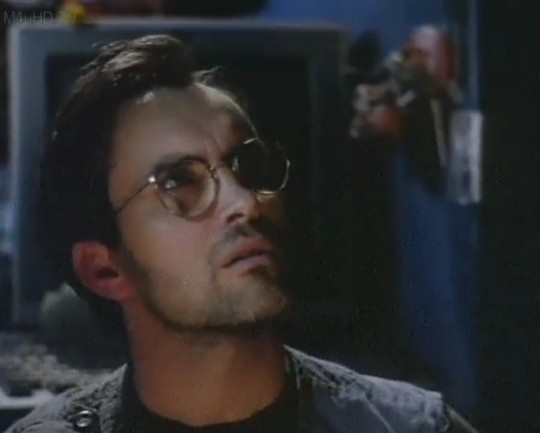
The Digital Prophet | Cyberstalker (1995) Andy Coberman
34 notes
·
View notes
Text
Is juvia a stalker?
Well this topic was better discussed in the past by antis who were actually suffering under it but because some gruvians are trying again to define the definition stalker to their benefit, I thought giving you also a different construction.
At the end you are deciding what you want to believe in. But believe has nothing to do with science… not necessary
Stalking is unwanted (at the beginning) or obsessive (now) attention by an individual (Juvia) or group towards another person (Gray). Stalking behaviors are related to harassment and intimidation and may include following the victim in person or monitoring them. The term stalking is used with some differing definitions in psychiatry and psychology, as well as in some legal jurisdictions as a term for a criminal offense.
Psychologists often group individuals who stalk into two categories: psychoticand nonpsychotic.[3] Stalkers may have pre-existing psychotic disorders such as delusional disorder, schizoaffective disorder, or schizophrenia.
(Schizoaffective disorder (SZA, SZD or SAD) is a mental disordercharacterized by abnormal thought processes and deregulated emotions.[1][2]The diagnosis is made when the person has features of both schizophreniaand a mood disorder—either bipolar disorder or depression )
Most stalkers are nonpsychotic and may exhibit disorders or neuroses such as major depression, adjustment disorder, or substance dependence, as well as a variety of Axis II personality disorders (such as antisocial, borderline, dependent, narcissistic, or paranoid). Some of the symptoms of “obsessing” over a person may be characteristic of obsessive compulsive personality disorder.
The nonpsychotic stalkers’ pursuit of victims can be influenced by various psychological factors, including anger, hostility, projection of blame (SILVER),obsession, dependency, minimization, denial, and jealousy (FT>Phantom beginning). Conversely, as is more commonly the case, the stalker has no antipathic feelings towards the victim, but simply a longing that cannot be fulfilled due to deficiencies either in their personality or their society’s norms.[17] (wants friends?, wants a guild?, wants a family? wants to be as popular as him?)
In “A Study of Stalkers” Mullen et al.. (2000)[18] identified five types of stalkers:
Rejected stalkers follow their victims in order to reverse, correct, or avenge a rejection (e.g. divorce, separation, termination).
Resentful stalkers make a vendetta because of a sense of grievance against the victims – motivated mainly by the desire to frighten and distress the victim.
Intimacy seekers seek to establish an intimate, loving relationship with their victim. Such stalkers often believe that the victim is a long-sought-after soul mate, and they were ‘meant’ to be together.
Incompetent suitors, despite poor social or courting skills, have a fixation, or in some cases, a sense of entitlement to an intimate relationship with those who have attracted their amorous interest. Their victims are most often already in a dating relationship with someone else (SHE THINKS THAT HE IS WITH LUCY AT THE BEGINNING AND LATER ON).
Predatory stalkers spy on the victim in order to prepare and plan an attack – often sexual – on the victim.
In addition to Mullen et al., Joseph A. Davis, Ph.D., an American researcher, crime analyst, and university psychology professor at San Diego State University investigated, as a member of the Stalking Case Assessment Team (SCAT), special unit within the San Diego District Attorney’s Office, hundreds of cases involving what he called and typed “terrestrial” and “cyberstalking” between 1995 and 2002. This research culminated in one of the most comprehensive books written to date on the subject. It is considered the “gold standard” as a reference to stalking crimes, victim protection, safety planning, security and threat assessment published by CRC Press, Inc., in August, 2001.[19]
Many stalkers[quantify] fit categories with paranoia disorders. Intimacy-seeking stalkers often have delusional disorders involving erotomanic delusions. With rejected stalkers, the continual clinging to a relationship of an inadequate or dependent person couples with the entitlement of the narcissistic personality, and the persistent jealousy of the paranoid personality. In contrast, resentful stalkers demonstrate an almost “pure culture of persecution”, with delusional disorders of the paranoid type, paranoid personalities, and paranoid schizophrenia.[18]
Types of victims[edit]
Based on their work with stalking victims for eight years in Australia, Mullen and Pathé identified different types of stalking victims dependent on their previous relationship to the stalker. These are:[5]
Prior intimates: Victims who had been in a previous intimate relationship with their stalker. In the article, Mullen and Pathé describe this as being “the largest category, the most common victim profile being a woman who has previously shared an intimate relationship with her (usually) male stalker.” These victims are more likely to be exposed to violence being enacted by their stalker especially if the stalker had a criminal past. In addition, victims who have “date stalkers” are less likely to experience violence by their stalkers. A “date stalker” is considered an individual who had an intimate relationship with the victim but it was short-lived.[5]
Casual acquaintances and friends: Amongst male stalking victims, most are part of this category. This category of victims also includes neighbor stalking. This may result in the victims’ change of residence.[5]
Professional contacts: These are victims who have been stalked by patients, clients, or students whom they have had a professional relationship with. Certain professions such as health care providers, teachers, and lawyers are at a higher risk for stalking.[5]
Workplace contacts: The stalkers of these victims tend to visit them in their workplace (becoming FT mage) which means that they are either an employer, employee, or a customer. When victims have stalkers coming to their workplace, this poses a threat not only to the victims’ safety but to the safety of other individuals as well.[5] Like Lucy for instance
Strangers: These victims are typically unaware of how their stalkers began stalking because typically these stalkers form a sense of admiration for their victims from a distance.[5]
The famous: Most of these victims are individuals who are portrayed heavily on media outlets but can also include individuals such as politicians and athletes.[5]
Gender[edit]
According to one study, women often target other women, whereas men generally stalk women only.[12][13] However, a January 2009 report from the United States Department of Justice reports that “Males were as likely to report being stalked by a male as a female offender. 43% of male stalking victims stated that the offender was female, while 41% of male victims stated that the offender was another male.
So in summary Juvia is a psychotic and after they lived together non psychotic rejected stalker, intimacy seeking stalker and incompetent suitor stalker
6 notes
·
View notes
Text
[Eugene Volokh] Photographing Someone Being Arrested Doesn't Count as "Stalking"
From yesterday's Florida Court of Appeal decision in Pickett v. Copeland:
Terrance J. Pickett appeals the trial court's Final Judgment of Injunction for Protection Against Stalking.... As defined in section 784.048(2), Florida Statutes (2016), stalking occurs when a person "willfully, maliciously, and repeatedly follows, harasses, or cyberstalks another person[.]" "Harass" is defined in section 784.048(1)(a) to mean "engag[ing] in a course of conduct directed at a specific person which causes substantial emotional distress to that person and serves no legitimate purpose." In its turn, "course of conduct" is defined as "a pattern of conduct composed of a series of acts over a period of time, however short, which evidences a continuity of purpose." § 784.048(1)(b)....
[W]e are compelled to conclude that the evidence was neither competent nor substantial to carry Ms. Copeland's burden [to provide evidence of stalking].
While there was evidence that Mr. Pickett followed Ms. Copeland from the Murphy gas station on Thanksgiving Day in 2016, he did so because there was an outstanding warrant for Ms. Copeland's arrest for violating the injunction he had obtained against her, and while he was following her, it is undisputed that he was talking to the police. That was, at most, a single act of following.
Furthermore, though Ms. Copeland accused Mr. Pickett of driving past her house on multiple occasions—presumably to prove harassment—the evidence only suggested a single incident of his passing by, which falls short of a malicious "course of conduct" serving "no legitimate purpose." § 784.048(1)(a), (b) & (2), Fla. Stat.; see Leach, 162 So. 3d at 1106 (reversing injunction and holding Leach's several messages to Kersey by phone, through friends, and on social media, after she learned of an eighteen-month affair between Kersey and Leach's husband, could not be found to serve " 'no legitimate purpose'").
[Footnote moved: It is clear that the trial court was troubled by the fact that when law enforcement caused Ms. Copeland to pull over into a parking lot, Mr. Pickett got out of his vehicle and used his cell phone to videotape her arrest. However, for purposes of the definition of harassment, "course of conduct" "does not include constitutionally protected activity[.]" § 784.048(1)(b), Fla. Stat. (2016). Even though we recognize that this protective language will not necessarily provide immunity for every instance where an individual videotapes an arrest—because an individual's actions may go beyond the scope of the constitutional protections—there is a First Amendment right to videotape police officers while they are conducting their official duties in public:
"Every Circuit Court of Appeals to address this issue (First, Fifth, Seventh, Ninth, and Eleventh) has held that there is a First Amendment right to record police activity in public. See Turner v. Lieutenant Driver, 848 F.3d 678 (5th Cir. 2017); Gericke v. Begin, 753 F.3d 1 (1st Cir. 2014); Am. Civil Liberties Union of Ill. v. Alvarez, 679 F.3d 583 (7th Cir. 2012); Glik v. Cunniffe, 655 F.3d 78 (1st Cir. 2011); Smith v. City of Cumming, 212 F.3d 1332 (11th Cir. 2000); Fordyce v. City of Seattle, 55 F.3d 436 (9th Cir. 1995). Today we join this growing consensus. Simply put, the First Amendmentprotects the act of photographing, filming, or otherwise recording police officers conducting their official duties in public." Fields v. City of Philadelphia, 862 F.3d 353, 355-56 (3d Cir. 2017).]
As a result, we hold there was no competent, substantial evidence to support the imposition of an injunction for protection against stalking. Consequently, the final judgment is reversed.
0 notes
Text
DCT Threats
1st Threat - Spams:
Brief explanation of threat: Spam is when you bombard someone with advertisements and other unwanted garbage (just like TV!), it is also when you post meaningless, useless stuff on forums. It's also a meat substitute thingy.
Legal issues: It's not against the law, though many websites have rules against it.
Ethical issues: None, go spam to your hearts content, Anons of the world.
How to prevent Spams:
1. Try to avoid opening spam emails and clicking on links in spam messages.
2. Don't buy anything from a spammer.
3. Don't be tempted to reply.
4. Don't threaten the spammer.
5. Avoid 'unsubscribe' options.
6. Use a disposable email address.
What to do if the treat happened to you:
1. Ask your internet service provider (ISP) about arranging a spam filtering service with your internet connection.
2. If you are using a web-based email address, such as Gmail, activate the junk or spam email preferences. You can also purchase spam-filtering software for your email account.
2nd Threat - Cyber-stalking:
Brief explanation of threat: Stalking is a term commonly used to refer to unwanted attention by individuals (and sometimes groups of people) to others.
Legal issues: New Zealand Harassment Act 1997, Crimes Act 1961, Domestic Violence Act 1995, Telecommunications Act 1987
Ethical issues: Stalking is harassment. Harassment is wrong.
How to prevent the threat:
1. Be careful what personal information you share online including in email, on social networking sites like Facebook and Twitter and chat rooms. It is very easy to glean information about where you live, the places you love to go to in your area and the people you care about from posts and pictures.
2. Make sure that your internet service provider (ISP), cell phone service, instant messenger (called internet relay chat, or IRC in some terms of service) network and other services you use has an acceptable privacy policy that prohibits cyberstalking. If they have none, suggest they create one and/or switch to a provider that is more responsive to user privacy concerns and complaints.
3. Services such as Facebook change their privacy policy all the time, so it is a good idea to check your privacy settings to make sure you are sharing the information you want to share with people you trust and not the general internet public. Some sites have options for you to test how your profile is being viewed by others – test and make sure you only reveal what is absolutely necessary.
What to do if the threat happened to you:
1. Trust your instincts. If you feel uncomfortable or an online situation becomes hostile, remove yourself from the online space by logging off or surfing elsewhere, or block the other persons access to you.
2. If you are receiving unwanted contact, make clear to that person that you would like him or her not to contact you again. Many women who have reported being harassed do this and warn that any further contact will result in the filing of a police report. Depending on the harasser, engagement with the person can escalate or cease, so if you consider contact appropriate and necessary, do so once and document it.
3. Save all communications with the stalker for evidence. Do no edit or alter them in anyway. Try using print screens, especially if the harassment is happening in real-time.
4. Tell your family and friends that someone is stalking you online. Being stalked – online or offline – is a traumatic experience and support from your family and friends is critical at this time to help you cope. Also check that what they are revealing about you and their relationship with you in their online spaces, albeit inadvertently.
5. Tell your employer that someone is stalking you if you think this person may harass you in the workplace. Your employer will be more likely to back you up if they receive harassing or questionable messages about you from the cyber-stalker, and they may be helpful in mitigating any professional damage.
0 notes